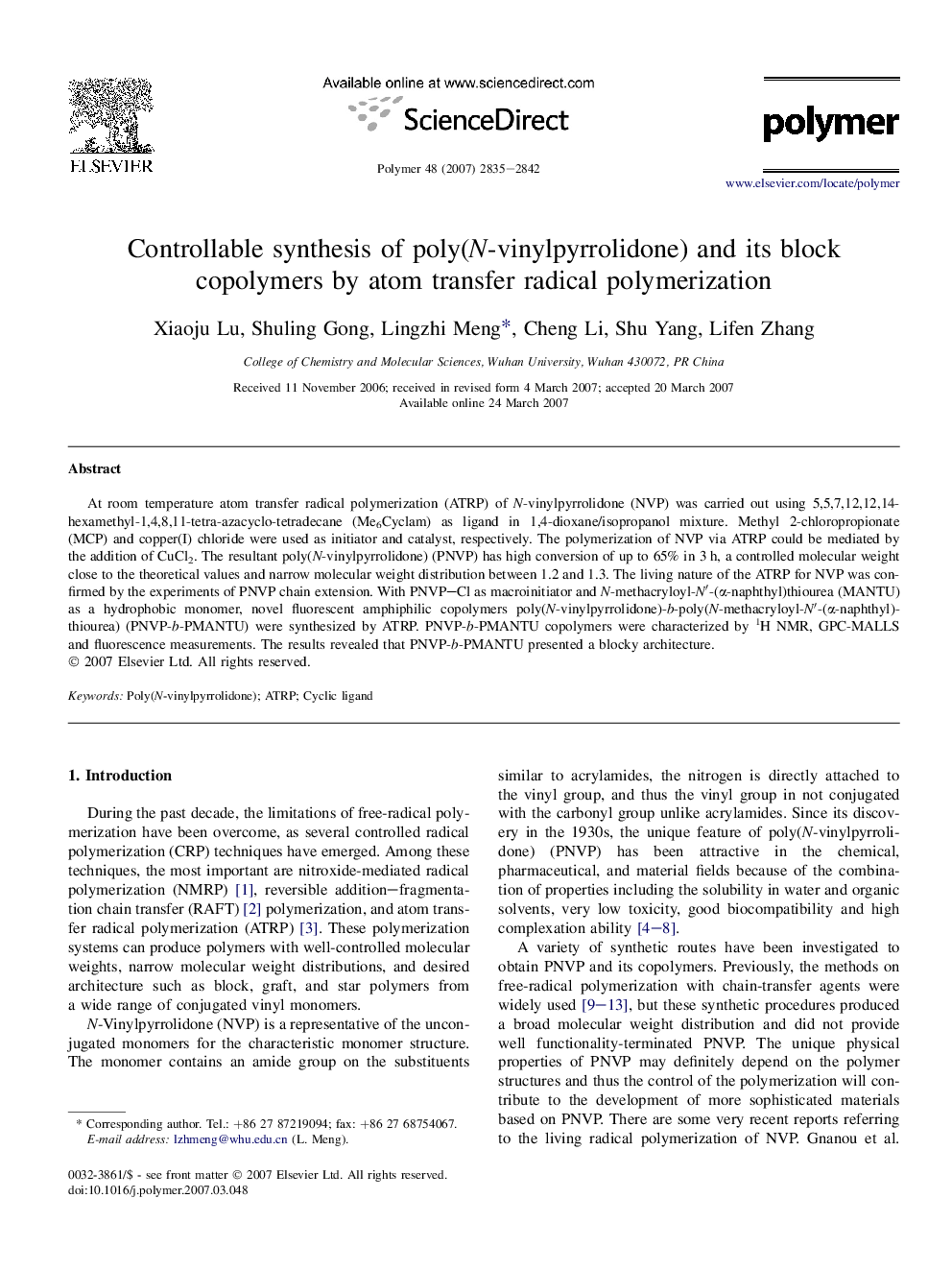| Article ID | Journal | Published Year | Pages | File Type |
|---|---|---|---|---|
| 5190328 | Polymer | 2007 | 8 Pages |
Abstract
At room temperature atom transfer radical polymerization (ATRP) of N-vinylpyrrolidone (NVP) was carried out using 5,5,7,12,12,14-hexamethyl-1,4,8,11-tetra-azacyclo-tetradecane (Me6Cyclam) as ligand in 1,4-dioxane/isopropanol mixture. Methyl 2-chloropropionate (MCP) and copper(I) chloride were used as initiator and catalyst, respectively. The polymerization of NVP via ATRP could be mediated by the addition of CuCl2. The resultant poly(N-vinylpyrrolidone) (PNVP) has high conversion of up to 65% in 3 h, a controlled molecular weight close to the theoretical values and narrow molecular weight distribution between 1.2 and 1.3. The living nature of the ATRP for NVP was confirmed by the experiments of PNVP chain extension. With PNVP-Cl as macroinitiator and N-methacryloyl-Nâ²-(α-naphthyl)thiourea (MANTU) as a hydrophobic monomer, novel fluorescent amphiphilic copolymers poly(N-vinylpyrrolidone)-b-poly(N-methacryloyl-Nâ²-(α-naphthyl)thiourea) (PNVP-b-PMANTU) were synthesized by ATRP. PNVP-b-PMANTU copolymers were characterized by 1H NMR, GPC-MALLS and fluorescence measurements. The results revealed that PNVP-b-PMANTU presented a blocky architecture.
Keywords
Related Topics
Physical Sciences and Engineering
Chemistry
Organic Chemistry
Authors
Xiaoju Lu, Shuling Gong, Lingzhi Meng, Cheng Li, Shu Yang, Lifen Zhang,
